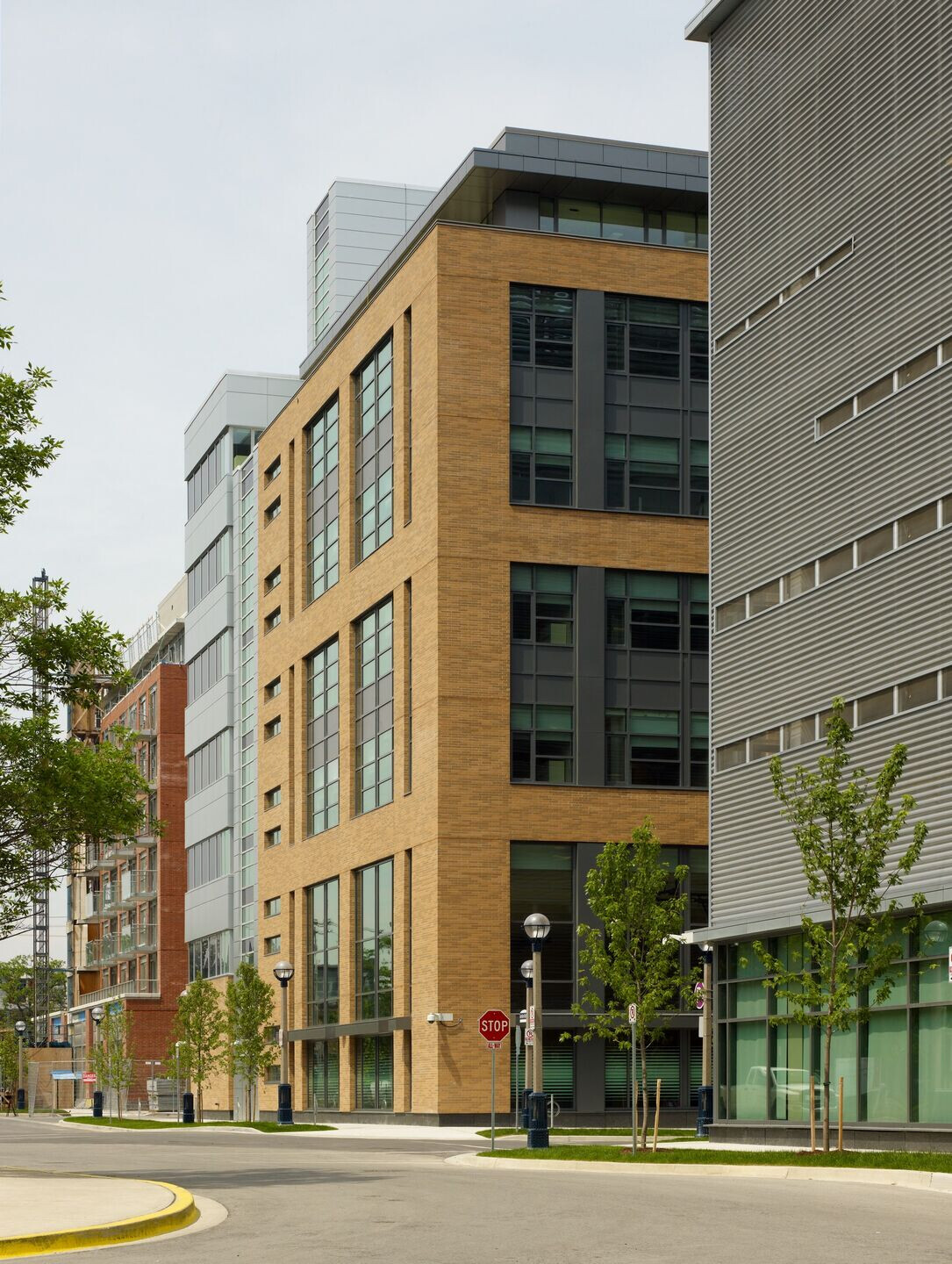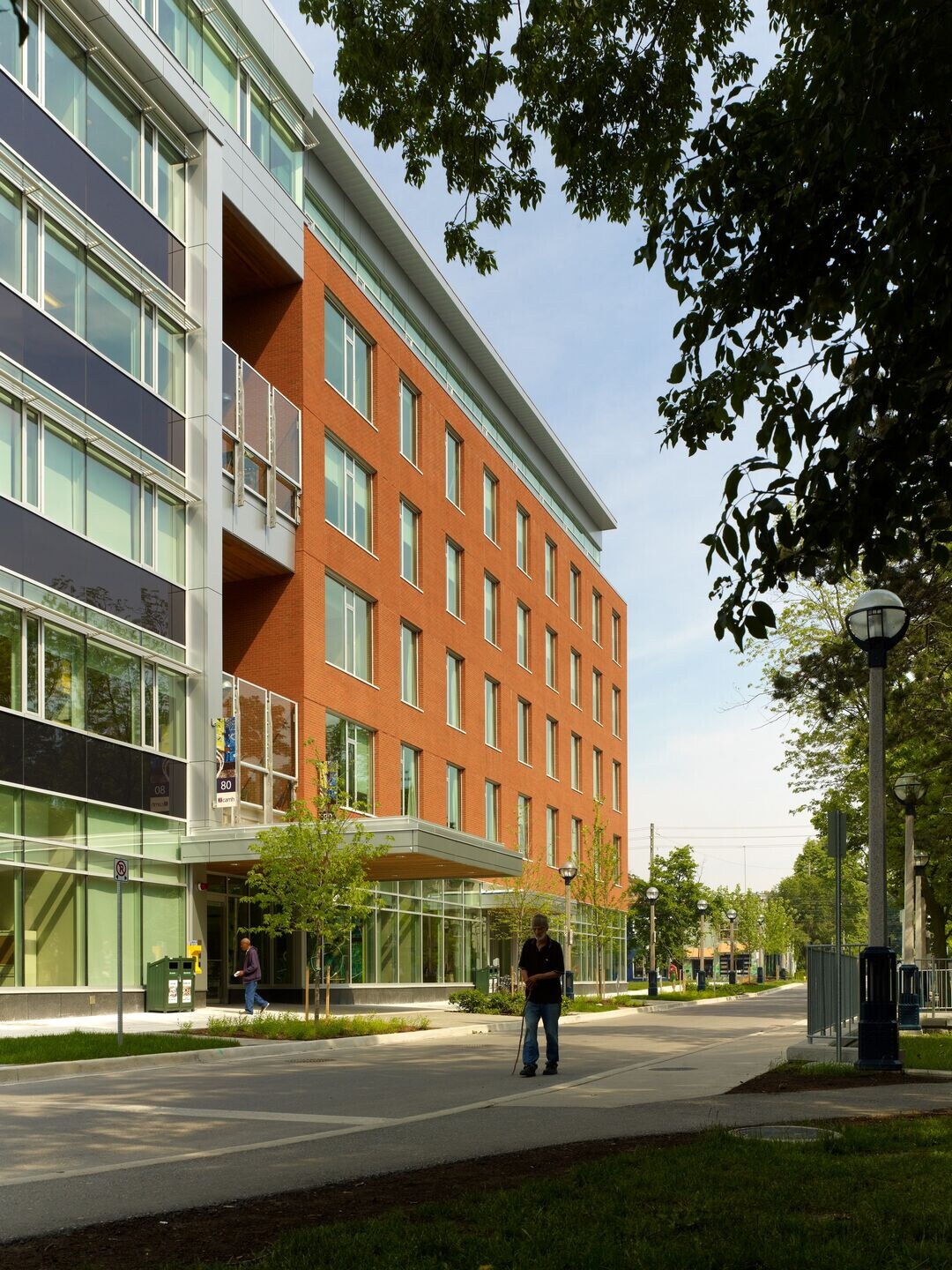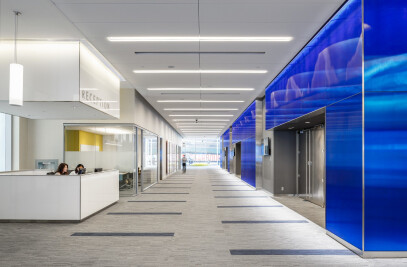In 2000, Kearns Mancini invited two Toronto firms to form a team – a Community Care Consortium (C3) for the design competition of the CAMH campus in downtown Toronto. This C3 consortium won the competition primarily because of the close attention paid to the needs and requirements of CAMH – in particular its desire to minimize the stigma associated with mental illness, and to build a hospital campus that would also function as a new urban neighbourhood.


BACKGROUND
In 2000, Kearns Mancini invited two Toronto firms to form a team – a Community Care Consortium (C3) for the design competition of the CAMH campus in downtown Toronto. This C3 consortium won the competition primarily because of the close attention paid to the needs and requirements of CAMH – in particular its desire to minimize the stigma associated with mental illness, and to build a hospital campus that would also function as a new urban neighbourhood.
Through consultation with CAMH, the design consortium devised Phase 1A as an Alternative Milieu program in the form of three recognizable residential buildings, linked to a commercial office-style building. Each building block contains 24 patient rooms with six en-suite bedrooms on each of the four floors, forming an L-shaped building plan around a landscaped courtyard. Each floor functions as an ‘apartment,’ with six patients sharing kitchen, dining and living spaces.
Phase 1B of CAMH’s redevelopment comprises three large buildings, one of which is designed to accommodate acute care patients in a six storey L-plan building, with a secure internal courtyard and second floor terrace. The denser building form is determined by the urban context and the overriding master plan concept that all new CAMH buildings be well-integrated elements of the community’s existing built environment, with respect to scale, program and massing.


THE PROCESS
Kearns Mancini is dedicated to a collaborative approach, focusing on methods that fully engage each client as integral contributors to the design process.
Throughout the design process, in consultation with the client, Kearns Mancini sought to ensure a safe, secure environment would be created. This would be implemented without separating or isolating patients, visitors or employees of CAMH from the community in which it resides, in an effort to distance the institution from the stigma attached to monolithic, purpose-built asylums in secluded parks. This is achieved through the introduction of market housing in mixed-use structures throughout the campus.
Phase 1B comprised an ambitious phase of implementation to this design approach, which saw the construction of a psycho-geriatric unit, secure youth unit, the main food distribution services and Campus’ house-keeping services. This phase also included the construction of the general administration centre, IT department and main out-patient clinic within three urban mid-rise buildings in which inpatient floors are divided into patient and non-patient zones.
Separating programmatic zones allows patients a sense of place and feeling of home; nurses and doctors entering into the patient zone are received as guests providing care. A market housing mixed-use building was also built during this phase, which includes apartments allotted for outpatients.


THE RESULTS
The redevelopment of the CAMH campus – through community integration – aimed to eliminate the stigma related to mental illness.
The CAMH campus re-design has delivered on the Master Plan intent; the massing and scale of buildings are sympathetic to the best qualities of the existing Victorian context of Queen Street West.
New streets cut through the site and provide connections to the city, while maintaining a safe outdoor environment within the complex for patients and visitors alike. These facilities represent an innovative commitment to providing nurturing care in an urban environment and creating a healthcare program with a uniquely progressive identity.
Kearns Mancini brought its extensive health care experience into each phase of the project. Overall, the project delivers on CAMH’s intent to step away from earlier approaches to mental health care conventions, and toward an approach that treats patients in a respectful, dignified, holistic manner that normalizes mental health care.


Team:
Architect: Kearns Mancini in Association with Montgomery Sisam Architects, KPMB Architects, and Cannon Design as PDC Architect
Mechanical: Rybka Smith & Ginsler Limited
Electrical: Crossey Engineering
Structural: Raid Jones Christoffersen
Information Technology: Ehvert Technology Services
Urban Design: Urban Strategies
Traffic & Site Services: Marshall Macklin Monaghan
Functional Programmer: The RPG Partnership
Cost consultant: Marshall & Murray Inc.
Landscape Architects: Janet Rosenburg + Associates
Code Consultant: Larden Muniak Consulting Inc.
Photography: Tom Arban
Project Team: Jonathan Kearns, Peter Ng, Heather Button, Tan Duong, Dan McNeil














































